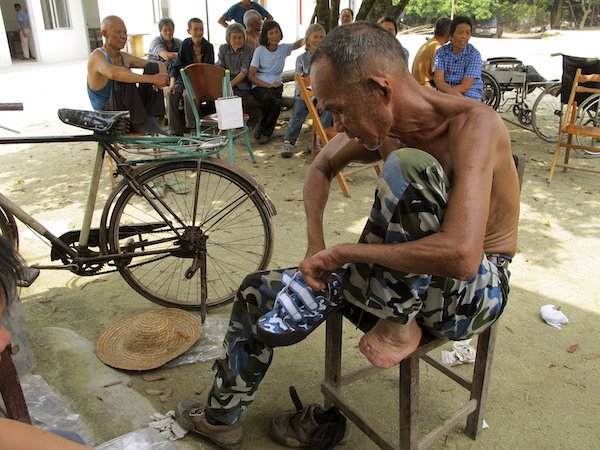
WASHINGTON — When people think of leprosy, they likely imagine an ancient disease far removed from modern life.
But leprosy, caused by a bacterial infection that affects the nerves, skin, eyes, and lining of the nose, still exists today, affecting an estimated 2 to 3 million people around the world. It is also curable with antibiotics.
More than half of the new cases of leprosy, also known as Hansen’s disease, are in India.
In the United States, about 200 cases are reported yearly, primarily in Arkansas, California, Florida, Hawaii, Louisiana, New York, and Texas.
The disease is highlighted each year on World Leprosy Day, which takes place this year on Jan. 29. It is marked annually on the last Sunday in January to raise awareness of the disease and end the stigma and discrimination around it.
On Jan. 23, Pope Francis described World Leprosy Day as an important opportunity to “renew our commitment to building an inclusive society that leaves no one on the margins.”
The pope was addressing participants attending a Jan. 23-24 Vatican-sponsored symposium on caring for those suffering from leprosy and working to eradicate the disease.
“We must not forget these brothers and sisters of ours” who are afflicted by Hansen’s disease, he said in his message to the group, reported by Vatican News.
The pope also noted that the “stigma attached to leprosy continues to cause serious human rights violations in various parts of the world” and urged people not to ignore those suffering from it since it still affects hundreds of thousands of people around the world, especially “in more deprived social contexts.”
In urging a broader outreach to those suffering from leprosy, he asked, “Will we bend down to heal the wounds of others? Will we stoop to carry one another on our shoulders? This is the present challenge, of which we should not be afraid.”
The pope also said care for those suffering from leprosy must involve “treating them fully as persons and recognizing them as the main players in their struggle to participate in basic human rights and live as full members of the community.”
His message was a far cry from the Old Testament book of Leviticus, which says, “The leprous person who has the disease shall wear torn clothes and let the hair of his head hang loose, and he shall cover his upper lip and cry out, ‘Unclean, unclean.’ ”
Leprosy is mentioned 68 times in the Bible — 55 times in the Old Testament and 13 times in the New Testament — according to the 2007 book, “The Genesis of Germs,” by Alan Gillen. The book also points out that the biblical description of leprosy is likely somewhat different from what it is today.
New Testament references to this condition emphasize care and healing, with Jesus touching those with leprosy and treating them with compassion even though they had been shunned by family members and neighbors.
Exclusion of those with leprosy continued in the late 1800s when St. Damien and St. Marianne Cope cared for those with Hansen’s disease exiled on the Hawaiian island of Molokai.
In modern times, there is still a stigma associated with leprosy that often affects those living in crowded conditions who may have limited access to health care or might not seek help when symptoms first appear.
Catholic organizations worldwide care for those with leprosy, including the St. Francis Leprosy Guild based in England, the Marie Adelaide Leprosy Center in Pakistan, and the Mutemwa Care Center in Zimbabwe.
The World Health Organization points out that the disease is at least 4,000 years old, making it one of the oldest diseases known, but the group also points out that this generation could be the one that ends leprosy’s transmission since it is curable and the organization provides free leprosy treatment worldwide.
